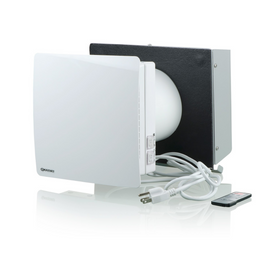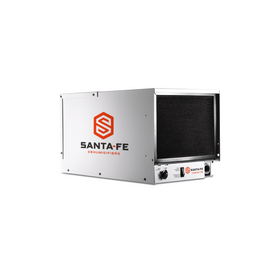
Biochar Production on a Homeowner Level
Last Updated: Feb 13, 2025The Amazon Rainforest is the perfect example of an untouched abundance of biodiversity. The largest rainforest in our world is home to hundreds of thousands of different creatures. However, the commonly-held idea that it is an untouched wilderness is turning out to be questionable, at best. Over thousands of years, indigenous populations across this vast expanse might have played an essential role in interacting with the forest ecosystem and planning a “food forest” over an incredible land area.
Table of Contents
- What is Biochar?
- What Are The Benefits Of Biochar?
- What Can Be Used To Make Biochar?
- What Is the Difference between Charcoal and Biochar?
- How Do You Make Biochar At Home?

One of the most convincing pieces of evidence for this theory is the abundance of “terra preta,” or patches of fertile black soil penetrating several meters deep into the soils beneath the thick canopy of the rainforest. The Amazon is teeming with thousands of different species of plants and animals. Its thin, shallow soils, however, are incredibly vulnerable to erosion. The massive amount of insects and microorganisms rapidly decompose the organic matter that would slowly decompose into fertile humus in different climates. The result is a relatively infertile and acidic soil that is rapidly depleted when exposed to the elements.
How, then, did these abnormally black and fertile patches of earth appear in scattered regions around the Amazon Rainforest? Scientific research into the terra preta of the Amazon has led us to believe that Amazonian indigenous groups fertilized large rainforest areas with biochar.
If the remains of branches and leaves burnt thousands of years ago are still fertilizing the thin, fragile soils of the Amazon, what possibilities might biochar hold for today?

What is Biochar?
Biochar is a form of charcoal produced when various types of organic matter burn at high temperatures with little or no oxygen. This process, called pyrolysis, semi-permanently traps the carbon in organic matter in a solid form. During normal combustion, leaves, firewood, and dry grass burn until all that is left is ash. During this “normal” burning process, enormous amounts of carbon dioxide and nitrous oxide, both extremely potent greenhouse gasses, are released into the atmosphere. However, the controlled burning of organic matter can stop the combustion process at the opportune time to create biochar, which is mostly charcoal.
Biochar, then, can sequester carbon dioxide from the atmosphere, thus helping to combat global warming. As a stable form of carbon, this material can be crushed and added to soils to increase soil fertility and act as a carbon sink buried underground.

What Are The Benefits Of Biochar?
Scientists are still researching the potential benefits associated with biochar production. However, we know that as organic matter decomposes, it will inevitably release carbon dioxide into the atmosphere. And yes, that does mean that your backyard compost pile is also releasing CO2 into the air. Finding ways to stop this natural decomposition process, then, can help to reduce carbon emissions.
Project Drawdown looks at dozens of different strategies for sequestering carbon. It explains that, where biomass decomposes above ground and releases methane and carbon into the atmosphere, biochar can hold and bury the carbon from the biomass feedstock. This enables a much slower release of carbon into the atmosphere - the now stable material can be retained for centuries! Experts estimate that biochar could lead to billions of tons of CO2 being sequestered annually.
When applied to the soil, biochar acts as an amendment that enhances plant growth. Biochar is often “activated” with beneficial microorganisms and nutrients. Because it has a porous surface area, biochar essentially acts as a sponge to hold nutrients and water in the soil, making them more easily accessible by plants.
Further research has found that biochar can act as an alternative heating source in conventional wood stoves. It might even help to reduce methane emissions when fed in small amounts to cattle.
What Can Be Used To Make Biochar?
One of the most beneficial aspects of biochar is that it is possible to make it from virtually any leftover organic matter. In rural areas around the country, burning crop residues is a severe problem that negatively affects air quality and releases enormous greenhouse gasses into the atmosphere. Instead of burning leftover wheat straw, corn stalks, coffee pulp, and pruned orchard branches, turning that organic matter into biochar is a win-win solution. We can convert a problematic waste product into a carbon-sequestering and soil-improving material with a minimum amount of work.
On a household level, the fallen autumn leaves that hundreds of thousands of homeowners either burn or send to the landfill could also be an excellent source of biochar. Fallen tree branches, wood scraps, and virtually anything burnable is other potential sources for homemade biochar.
What Is the Difference between Charcoal and Biochar?
After explaining how biochar is made, many people might assume that it is the same thing as charcoal used for grilling out. Unfortunately, most charcoal sold commercially today is a mix of biomass (mostly wood) and other chemical components, including limestone and some chemical fire starter agents. Charcoal is generally produced from different types of hardwood trees, and the end product is large chunks of wood useful for cooking and grilling.
On the other hand, biochar is entirely derived from biomass (not just trees) heated in a limited oxygen environment. Because biochar is an agricultural and soil amendment product, it is usually crushed or made into smaller-sized pellets. This powder or pellet material can then added to soil to improve its physical properties and water retention capabilities.
Charcoal and biochar are made similarly. However, one of the sustainability drawbacks of charcoal is that large areas of standing forest are often cut down for charcoal production. On the other hand, biochar can be made from the byproducts of farms and other industries that rely on biomass. However, if you live near a campground, leftover charcoal is often a great (and free) source of biochar that you can use to improve your soil.

How Do You Make Biochar At Home?
Besides offering numerous benefits, biochar is also extremely easy to make. Below, we briefly explain three different methods for making homemade biochar from any source of dry biomass you might have lying around the home.
The Pit:
This method requires digging a small pit and burning the biomass inside that pit. Once the biomass is burning strong, but before it turns to ash, cover up the hole with loose soil. Covering the fire will “smother” it, and the lack of oxygen will stop the combustion and turn the burning material into biochar.
The Hose:
Another easy way to make homemade biochar is to create a bonfire with your dry biomass. You then use water to put it out before it turns to ash. For both “the pit” and “the hose” methods, Mother Earth News recommends watching the color of the smoke as your biochar fire burns. It will shift from white, made mostly of water vapor, to yellow smoke, rich with resins and sugars, to grayish-blue - at which point you should cover the fire with a small amount of soil and leave it to smoke. Once the biomass has smoldered into charcoal, put the fire out with water.
Converted Metal Barrel:
It is possible to turn a used 55-gallon metal barrel into a biochar production machine. This method is better at turning more of the biomass into biochar. However, it does require smaller “loads” and can be time-consuming if you have a large amount of wood to burn. You can read a detailed account of converting a metal barrel into a biochar processing machine here.
Biochar can help sequester carbon, improve soils, avoid groundwater contamination, and turn a waste product into a high-value, sustainable product.
Tobias Roberts
Tobias runs an agroecology farm and a natural building collective in the mountains of El Salvador. He specializes in earthen construction methods and uses permaculture design methods to integrate structures into the sustainability of the landscape.










